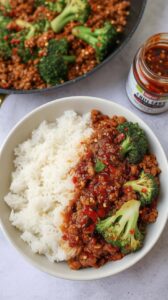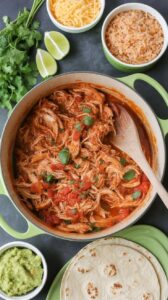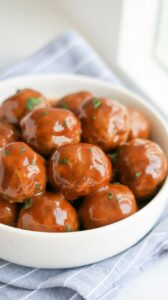Boiling chicken might sound basic, but trust me—it’s one of those kitchen tricks I go back to week after week. Whether I’m prepping for a quick weeknight meal or stashing away protein for the week, this simple method gives me juicy, versatile chicken every single time.
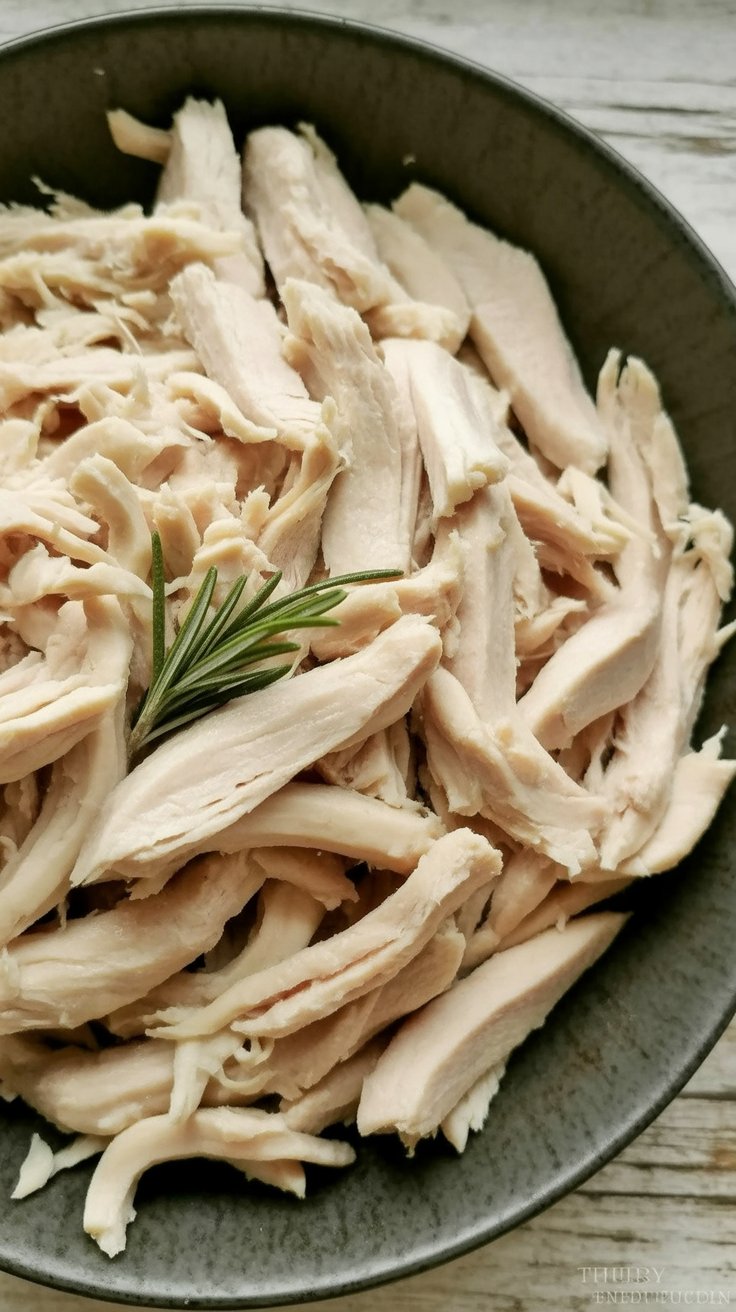 Perfect for meal prep, soups, casseroles, or even quick chicken sandwiches.
Perfect for meal prep, soups, casseroles, or even quick chicken sandwiches.
Why I Always Have Boiled Chicken in My Fridge
Let’s be honest—boiled chicken doesn’t exactly sound exciting, right? But hear me out.
I first started boiling chicken when I needed something fast, protein-packed, and neutral enough to work in different meals throughout the week. Now, it’s part of my regular routine. I boil a batch on Sunday and use it in everything from chicken salad to wraps to quick noodle soups.
Here’s why it’s so handy:
-
It’s quick and requires zero oven time.
-
The chicken stays moist and tender (not dry like baked chicken gone too long).
-
The leftover broth? Liquid gold. I use it to cook rice, stir into curries, or make a cozy soup on a rainy night.
-
You can make a big batch and freeze what you don’t need—super helpful for busy days.
 What You’ll Need (and What You Can Swap)
What You’ll Need (and What You Can Swap)
I keep things simple, but add just enough to make the chicken taste like something you actually want to eat.
The Chicken
Boneless, skinless chicken breasts work great—they cook evenly and shred easily. But if you’ve got bone-in pieces lying around (or even a whole chicken), toss those in. The bones and skin add richness to the broth, and the meat comes out even more flavorful.
The Flavor Boosters
This is where you can make it your own.
I usually throw in:
-
Half an onion, sliced
-
One rib of celery
-
A clove or two of garlic
-
A bay leaf or some thyme if I have it
Nothing fancy—just everyday ingredients that make the broth and chicken taste so much better.
Liquid
You can boil chicken in water, but broth takes it up a notch. If I only have water, I’ll toss in a bouillon cube or a splash of soy sauce for depth.
Don’t Throw Away That Broth
Seriously, save it.
Once the chicken’s done, strain the broth and pour it into a jar or freezer-safe container. I like to use it to cook rice (tastes way better than plain water), or I’ll use it to thin out sauces and stews.
Some weeks, I freeze it in an ice tray so I can pop out a cube or two whenever I’m cooking and need a little extra flavor.
How I Boil Chicken Without Overthinking It
Here’s how I do it, every single time:
-
Place the chicken in a pot and add just enough water or broth to cover.
-
Add a generous pinch of salt, pepper, and whatever flavorings you’re using (celery, onion, garlic, herbs).
-
Bring it to a gentle boil, then reduce to a simmer.
-
Let it simmer until the chicken is cooked through (usually 12–15 minutes for medium breasts).
-
Take it off the heat, let the chicken rest for 10 minutes, then it’s ready to shred, slice, or cube.
Pro tip: If you’re boiling frozen chicken, just add a few extra minutes. It still works great.
 How I Shred Boiled Chicken (Without Burning My Fingers)
How I Shred Boiled Chicken (Without Burning My Fingers)
After resting for 10 minutes, I use two forks and start pulling the chicken apart gently. If you’re like me and don’t have the patience to shred by hand, toss the chicken into your stand mixer or use a hand mixer. It takes just 30 seconds to get perfect shreds.
I often batch shred and freeze in smaller bags for quick stir-fries, tacos, and sandwiches.
How to Store It Like a Pro
Once cooled, I portion the chicken into zip-top bags or airtight containers. Here’s how long it lasts:
-
Fridge: Up to 5 days
-
Freezer: Up to 2 months
I always label my bags with the date and portion size. That way, I can pull out exactly what I need without guessing.
And that leftover broth? Sometimes I cool it down and freeze it in jars or pour it into ice cube trays—perfect for adding flavor to sauces or reheating leftovers without drying them out.
Ways I Use Boiled Chicken All Week
Boiled chicken isn’t just for soup. I throw it into:
-
Creamy chicken pasta with garlic and spinach
-
Quick chicken fried rice
-
Chicken salad sandwiches for lunchboxes
-
Easy tacos with salsa and avocado
-
Chicken pot pie when I’m feeling fancy on a Sunday
It’s the kind of thing you don’t appreciate until you realize how much it makes weeknight cooking easier.
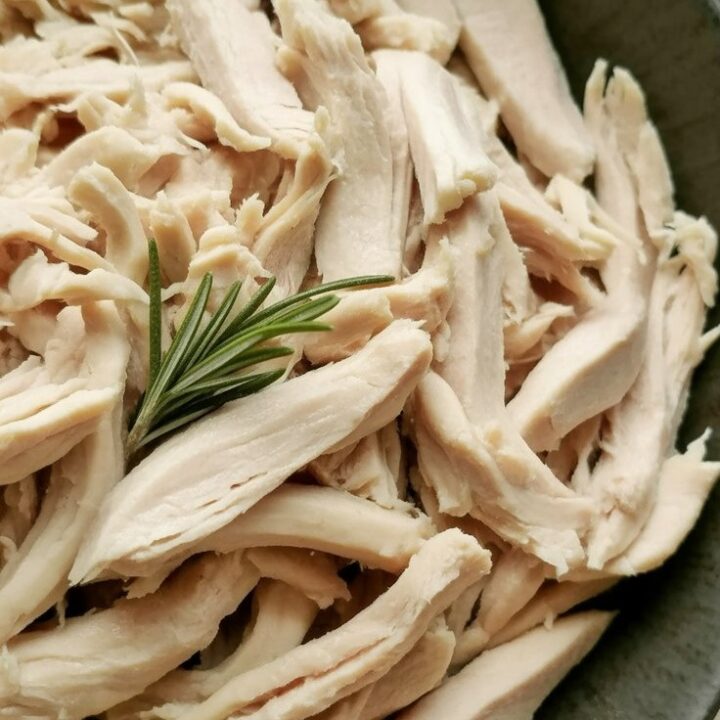
How to Boil Chicken Breasts
Need a simple, go-to method for juicy chicken breasts? Boiling them is hands-down one of the easiest ways to prep tender, flavorful chicken for salads, sandwiches, or meal prep. It’s fast, fuss-free, and the results are always moist—never dry.
Ingredients
- 2 boneless, skinless chicken breasts (about 7 oz each)
- 2 cups of water or chicken broth (plus more if needed)
- ¼ medium onion, sliced into thick rounds
- 1 rib of celery, chopped into a few big chunks
- ½ teaspoon poultry seasoning or a few fresh herbs like rosemary, parsley, or sage
- Salt and freshly ground black pepper, to taste
Instructions
- Start by placing the chicken breasts in a medium-sized saucepan. Pour in enough water or broth to just cover the chicken.
- Toss in the onion slices, celery chunks, a sprinkle of salt and pepper, and your choice of herbs or seasoning. Bring everything to a gentle boil over medium heat.
- Once it starts bubbling, cover the pan with a lid and lower the heat so it simmers softly. For boneless breasts, let them simmer about 12 to 15 minutes, or until the thickest part hits 165°F using an instant-read thermometer. (If you're using bone-in, plan for about 25–30 minutes.)
- Take the chicken out of the liquid and let it rest for 5 minutes before slicing, chopping, or shredding—whatever your dish calls for.
- Bonus tip: Don’t toss that flavorful broth! Strain it and save it for soups, cooking rice, or adding extra moisture to leftovers.
Notes
- Size matters: Larger chicken breasts may need a couple of extra minutes to cook through.
- Keep it gentle: Avoid a hard boil—low and slow helps keep the meat tender.
- Get creative: Feel free to switch up the seasoning—think garlic cloves, bay leaves, or a splash of lemon juice for extra flavor.
Nutrition Information:
Yield: 2 Serving Size: 1Amount Per Serving: Calories: 287Total Fat: 10gSaturated Fat: 3gTrans Fat: 0gUnsaturated Fat: 5gCholesterol: 123mgSodium: 744mgCarbohydrates: 4gFiber: 1gSugar: 2gProtein: 43g
Chickenrecipes.blog, occasionally offers nutritional information for recipes contained on this site. This information is provided as a courtesy and is an estimate only. This information comes from online calculators. Although allchickenrecipes.com attempts to provide accurate nutritional information, these figures are only estimates.
Answers to Common Questions
Can I boil frozen chicken breasts?
Yes, just make sure they’re separated (not stuck in a block). Add about 5–7 extra minutes to the cooking time.
How do I know when it’s done?
Use a meat thermometer—it should hit 165°F in the thickest part. Or just slice one open; it should be opaque and juicy, not pink.
Can I add spices like paprika or chili?
Definitely. If I’m using the chicken for wraps or tacos, I sometimes add smoked paprika, chili flakes, or cumin right into the pot.
Does it have to rest before shredding?
Yes. Even just 10 minutes makes a huge difference—resting keeps the juices inside the meat.
Try other Chicken Breast recipes:
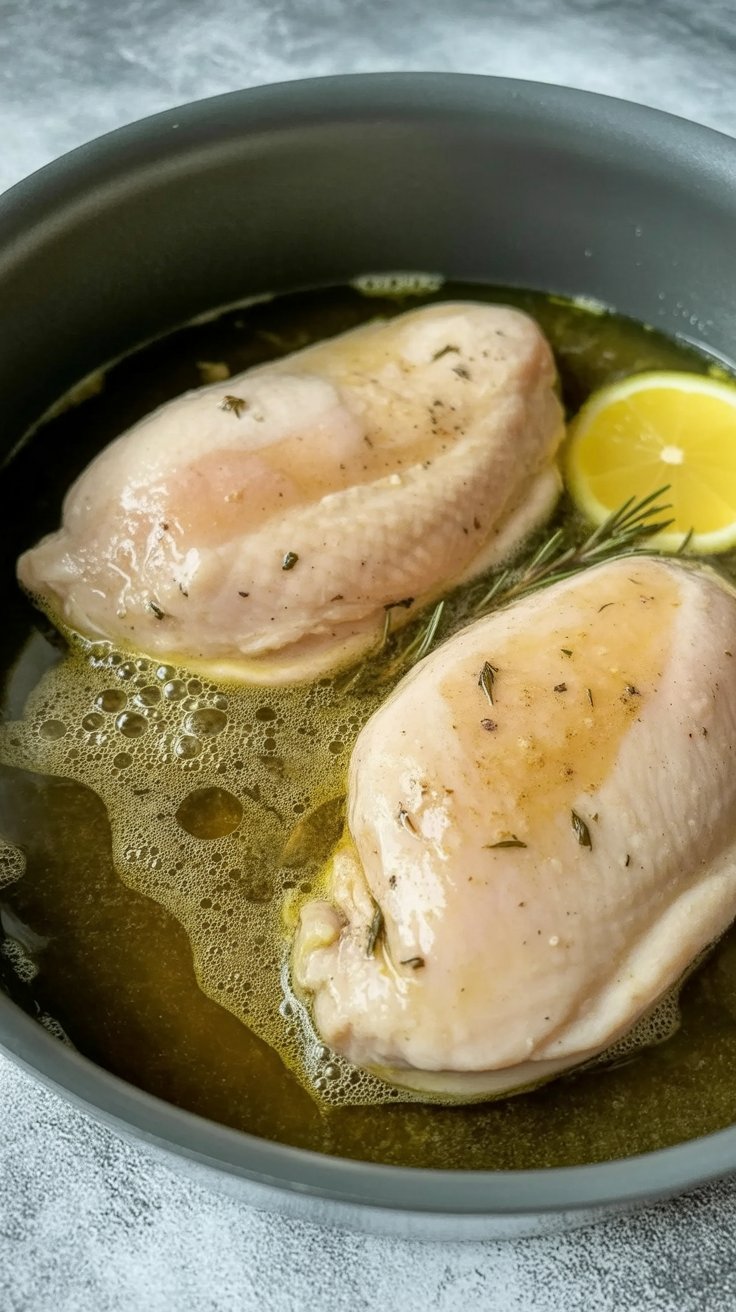 What You’ll Need (and What You Can Swap)
What You’ll Need (and What You Can Swap)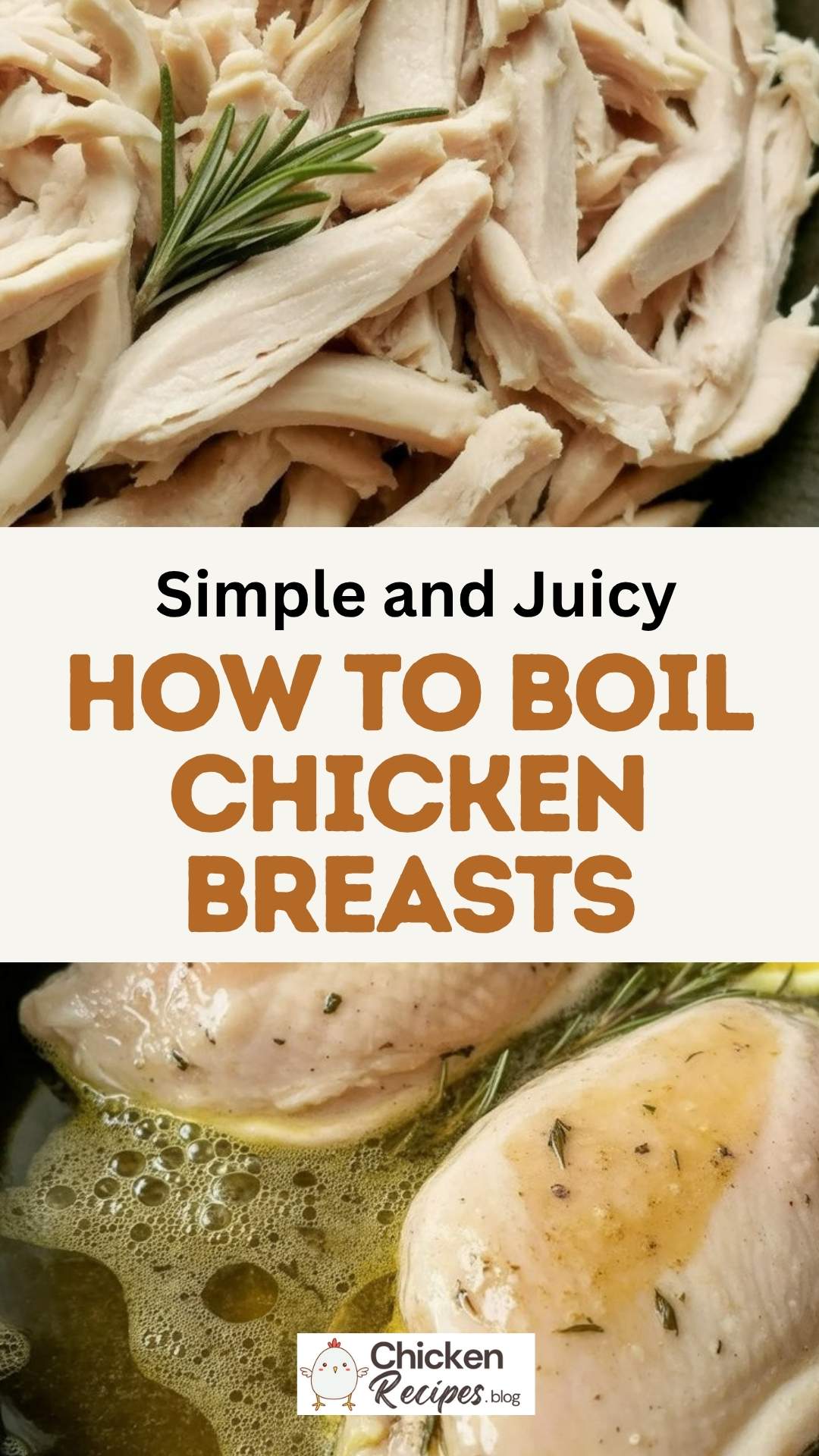 How I Shred Boiled Chicken (Without Burning My Fingers)
How I Shred Boiled Chicken (Without Burning My Fingers)